Huldra's Forest Dance
If I have the story straight, it's my stepdad’s parents who immigrated from Norway, and as such, he is a proud Norge descendant. The Norwegian flag flies high and proud at the home of he and my mom, and he’s close enough to his Norwegian roots that the smell of herring and sardines is somehow not disinviting. While his heritage wasn’t THE reason I visited Norway, a few decades of hearing about the wonders of Norway from him probably seeped into my decision-making on some level.
En route from Sweden by train, the first stop was the capital, Oslo, a stop entirely out of necessity as a transit hub. I’m not a good tourist in the big cities. Nature is harder to find and usually exists in small pockets in massive urban cities. The big attractions are often castles, cathedrals and museums, and since all of us tourists are using the same websites to figure out what to do in place, we’re falling all over and into each other trying to see the same stuff in cities. While my logic has evolved from the days of thinking I could experience a place “like a local” – for the most obvious of reasons that I’m not a local – I do try to not get caught up in the jet stream of tourists flowing in and out of attractions where the main activity is “seeing” a place. I need something more demanding of me; I generally don’t have enough interest in an experience that stops at literally just seeing places, and, no offense to castles and cathedrals, but that's often the design of the visitor experience.
I ate Italian food from a food truck near Oslo’s waterfront, watched thousands of Oslo visitors and residents stroll by on a warm summer evening, and ended the night squeezing into a small hotel room where there was room for a bed, or to lay out my suitcase, but not both. The building was U-shaped, with one leg of the U as the hotel and one leg as separate apartments, and for those of us with rooms oriented to the inward of U, we had the awkward and never-ending opportunity to watch each other go about our uneventful evenings.
The pace picked up the next day when I arrived in Bodo, Norway, to the north. REALLY north. 67+ degrees latitude north. North of the Arctic circle north.
Bodo is about 50,000 people, and I estimate that 49,000 of them like to spend time outside. In summer – free of any darkness for several weeks – it’s trekking, biking, sea kayaking and more. In winter, it’s Nordic skiing. If you’ve ever watched Nordic ski races in the Olympics, you know Norwegians are insanely good at it, and their fans are insanely insane at cheering them on. I needed to buy a pair of running socks, and when looking up “sporting good stores near me” on Google maps, there were 8 within a few blocks of where I stood. That was the first day. I had a good feeling about Bodo.
Just on the northern edge of town is a massive – MASSIVE – mountain park. I’m always struck by urban centers that got a step or two ahead in their planning and set aside gigantic swaths of land for public use. That was the case for Bodo. I had two big trail runs in this park and a long mountain bike ride as well, and I probably stopped at least a half dozen times during each to take in the view, not realizing this view would repeat itself yet again further down the trail. “The view couldn’t possibly get better,” I would tell myself, and stop to take a few photos. And then the view would get better, and I now have dozens and dozens of similarly looking photos.
I had paired up with an older Norwegian guy for the mountain bike ride via the “Get your Guide” app, a sort of AirBnB-like service where a local person from town will show you around and give you some local perspective on things. He moved to Bodo 30 years prior with the intent to work for a summer, and never left. A similar story can be told thousands of times over in towns all over the globe with big outdoor scenes.
Unfortunately, the battery on his e-bike malfunctioned about a third of the way into our ride, and with a lot of mountain yet to climb, it wasn’t an option for him to continue; e-bikes are heavy to pedal manually. But he taught me basic Norwegian, we shared some Danish cookies, and like so many people I meet outside of the U.S., wanted to know what I thought of Donald Trump. Regarding the latter, that had come up repeatedly in Denmark and Sweden also, but I had become no better at explaining what I feel is unexplainable.
After a few more days in Bodo, I was off to the Lofoten Islands to take care of some bucket list business. Getting there consists of a flight less than 30 minutes, one half the time it took me to walk to the airport, given the flight time beat the start time of Bodo’s bus system and its sleepy Uber drivers. The flight consisted of a small plane – a very small plane -- where passengers are asked their weight and then distributed accordingly among the seats so the plane doesn’t continue on the ground at a high speed when the runway runs out and crashes into the ocean, in the case of Bodo’s runway. This seems like a system that should have some sophistication to it, given what’s at stake.
But not at ‘ol Widerøe airline! By my count, there were three Americans, myself included, with garbage of an ability to convert to kilograms. There was also no ground truthing on the data. People’s responses to “how much do you weigh” – a question posed by the flight attendant as you entered the plane and you could FEEL the judgement by other passengers about your truthfulness– was accepted at face value. It takes little imagination to see flaws in this approach. The flight attendant was scribbling info down on a piece of paper, a piece of paper that looked salvaged from a prior and unrelated purpose. It sure seems like this exercise in weight distribution would come up often enough – say, dozens of times a day, according to the airline's schedule -- to warrant, maybe, a small form, perhaps with an outline of the plane and its seats, with enough room on the seats to write in some kilogram values. You know, something akin to a way to keep track of information that is apparently needed to prevent a crash into the ocean. Wideroe, call me. I got ideas.
Lofoten Islands: I feel like I should be getting close to a stage in my life -- given age and the good fortune of visiting a lot of places—where new places should remind me of someplace else on some level. When the Lofoten Islands came into view during the flight, I had no reference point. They reminded me of nowhere I have ever been. Big lush green mountains jetting skyward out of the ocean. Tons of them, separated by narrow straits and small bays, and the smallest villages tucked away in coves. I don’t have the vocab to describe it (that's on me, not vocab. The words probably exist).
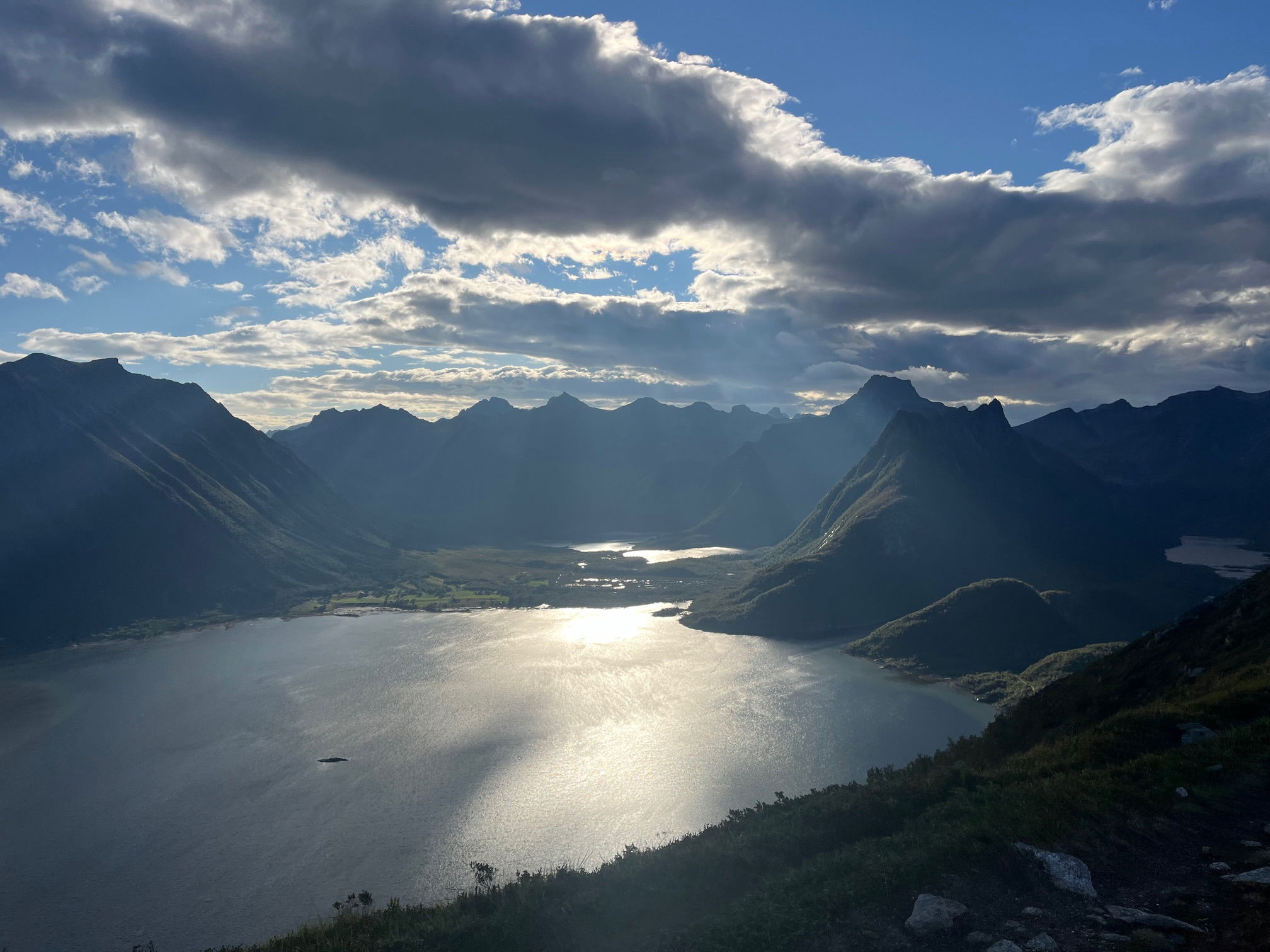
I rented a car, and set sail on Lofoten’s incredibly narrow roadways where every instance of an oncoming car required some non-verbal cooperation and a small leap of faith. I ran two trails on day one, and two trails on day two. I felt light on my feet much of the time, existing on some weird plane of existence. Lofoten sometimes felt almost fantasy-like, given the novelty and expanse of the land and seascapes, and then punctuated by moments of gratitude that this could possibly be my life.
Lofoten also plays host to a network of global budget travelers , consisting of people usually but not always in their 20s, often with a little stench, rarely sure of where they are staying that night, and wearing a well-worn backpack. They are easily spotted in places around the world, especially train stations and coffee shops. I was a version of this person in the mid-1990s trying to make my way through central America with a guidebook that gave my mother nightmares until I safely returned, with its title “Central American on a Shoestring.” To this day my mom probably has some regret for how much she encouraged us to be independent.
Lofoten gives off big vibes that it’s okay to pick up a hitchhiker, so I did, a hitchhiker who was part of the global on-a-shoestring travel network.
I’ll have one moment of integrity and not use his real name or where he’s from. So let’s call him “Lacking Situational Awareness,” or “LSA.” I had some food in the car, and offered LSA an apple, water and/or granola bar, of which he accepted two out of the three. Along with the food, I was also obviously giving him a ride, to Svolvaer, which maybe wasn’t a huge favor since that was in my direction. But still. I didn’t have to stop.
Well, LSA doesn't view these rides as any sort of favor, but simply how the word should work. And over the next 20 minutes I indulged in LSA’s observations and passive aggressive criticism of my hand sanitizer (a symbol of buying into global hysteria over germs), trail running (I miss a lot of small details by running which, to LMA, is surprising since I teach about the environment), and AirBnB accommodations which contributes to the slow cultural decline on Lofoten. He was able to assert the latter, amazingly, after only a day on Lofoten himself.
We got to LSA’s destination in Solvavaer, LSA got out of the car, I wished him well but didn’t mean it, he didn’t say anything equally meaningful either, and I carried on to finish off the rest of my cavaliere visit to the Lofoten Islands.
I’ll fast forward to about a week later, in Flam, Norway, far to the south of Lofoten and in the country’s famed fjord region. I’m running out of steam but there is a fantastic memory to share.
I rented a mountain bike and rode from Myrdal to Flam, which is about 13 miles, mostly downhill, and passes by one billion waterfalls, or so it seemed. The ride was recommended on several sites and travel blogs by crunchy nature people, and I had a good feeling about it. And man, it exceeded expectations. In what became a common occurrence, the trail would open up to a breathtaking view, I couldn’t imagine it getting any better and would take several photos, and would once again end up with dozens and dozens of photos by the end, each time thinking THIS view couldn’t possibly be outdone. Only to have it outdone.
But the absolute BEST part was 100% unanticipated. Sometimes the best parts are the best BECAUSE they are unanticipated.
From Flam you ride a train back to Myrdal. I was under the uniformed impression this was just a typical public transit style train ride. And in fact, such a train DOES exist, But not the one I bought a ticket for. No, no, no, the train ticket I purchased was 50% transport and 50% tour. These moments exploit my flaws as a human being, in this case those flaws being 1) easy annoyance at my self-sabotage by once again overlooking a detail, a detail in this case that was written right on page when purchasing the ticket, and 2) impatience when I feel like I am wasting my time. I didn't love that I had unknowingly put myself in position to be lumped in with all of the other tourists, ashamedly feeling some sort of tourist superiority by not demonstrating curiosity each time the pre-recorded narration pointed something out. Oftentimes, these were just normal things in a place. A church. A bridge. A farm. Nothing more significant than when they were built and the explanation of what they were obviously used for.
I had some pretty poor body language on that train ride. People scurried to the left when the train slowed and the guide told us to look left, then to the right when something of mile significance was off to the right, and so it went. Left, right, left, right, train sped up, train slowed down. I was more intrigued by the movement and giddiness of tourists than anything mentioned in the narration. We got to a spot where the train stopped completely and gave passengers a chance to get out and take a photo of a nearby waterfall from a platform. We had passed literally dozens of waterfalls by now. Why did we have to stop?
Then, something happened. Music started, loud new age Enya-like music, the kind you might here if you were floating through the clouds. Then the mass of tourists – almost all of them had gone outside -- shuffled and scurried with a sense of happy panic to one side of the platform, clearly to get a better view of something. Dozens and dozens of phones were raised above heads to capture something. All right, I’m curious.
And then she appeared.
A woman in a formal red gown and with blond hair flowing from the force of the waterfall appeared from the trees on a rocky outcrop by the waterfall.
She just appeared, to all of our surprise and delight, even mine. She flowed and swayed with the new age ballads blasting out of speakers. The tourists were going absolutely crazy in their pursuit of videos and photos. It almost seemed plausible to me that some didn’t realize this was all part of a production, that maybe they thought how lucky they were that this was nature in Norway. In Norway, women dance by waterfalls. What were the chances!
I was so instantly transformed from impatient train passenger to amused observer of the one of the funniest spectacles imaginable. The Enya music. The dancing blonde. The masse of giddy tourists.
I immediately had questions, and they came fast. Where did the woman come from? Literally, where does she go in between trains? What is the process like for getting this job? Does the train make an early trip to drop her off? Where does she go to the bathroom? Does she use hairspray? Does she get a shed to hang out in? What does she eat? And the more obvious question: what the hell is going on here?
Funnily, I NEVER heard an explanation of what we saw, which I later looked up online. I desperately hope the guide purposefully didn’t explain anything, because I love playing the scene in my head of people trying to explain the dancing forest woman in future conversations with their friends and family about the trip, but eventually that story must have an abrupt moment when they have no response to "why" or "who." You can describe WHAT you saw, but if you can't follow that up with the "why", well, I bet those moments are just plain awkward. "I'm not sure. It was just a dancing woman in the forest."
What we observed, I later learned, was an enactment of Huldra, an “elusive forest spirit from Norwegian mythology.” Apparently in some versions of the story, she can be a bit of a seducer as well, though on this particular day she used some self-restraint and didn’t seem to have eyes set on anyone, though my instinct told me to avoid eye contact with her, so…who knows what could have happened. That said, the New Zealand backpacker sitting next to me on the train -- he was equally as cynical in the pre-Huldra part of the train ride -- was younger and good looking; if I were Huldra (imagine!), that's where my eyes would be set. And he had just completed a few weeks of hiking and camping (i.e., living) in the forest for a few weeks, so he spoke Huldra's love language already.
A few days later I was describing this story to my stepdad’s cousins who I had met in Bergen, and I learned that people of a certain, er, character, can be described as a “Huldra,” and it’s not because they dance in forests. The image of Huldra below is borrowed from the internet (www.afr.com). Sadly, I did not have my phone handy to take pictures, as I was possibly also being actively seduced and under her spell. Huldra might be so good at her craft, you don’t even know it’s happening.
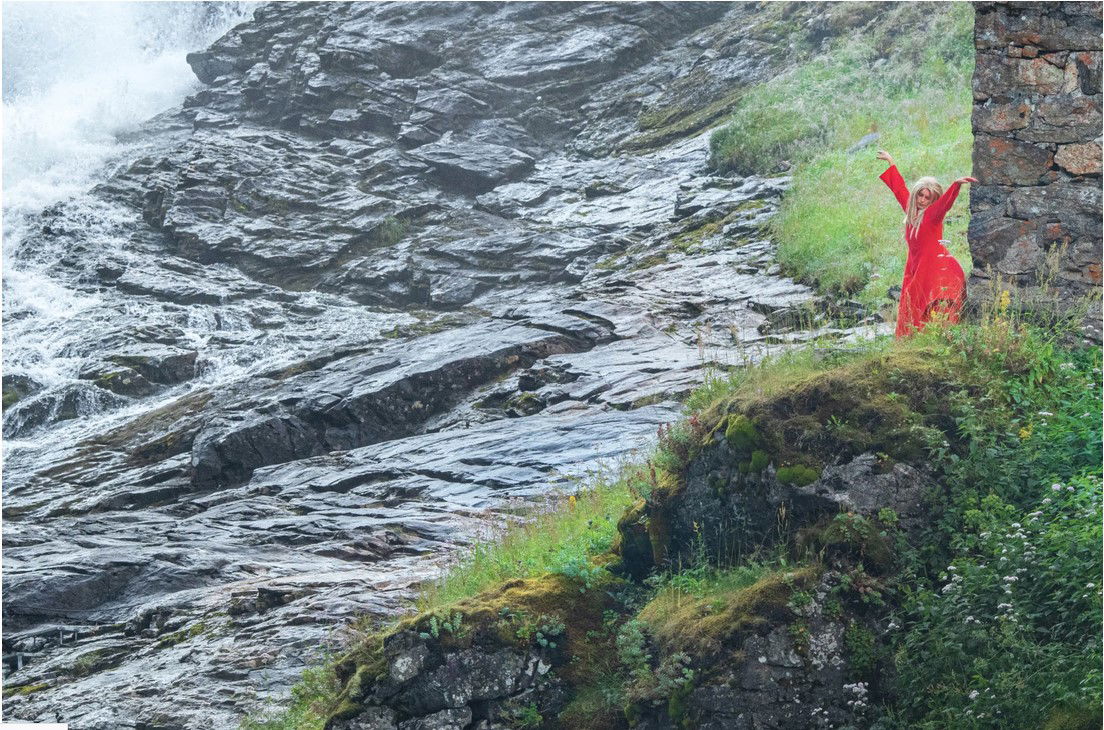
I’ll finish off with this: have you ever been to a Norwegian restaurant? Probably not. You know why? My guess is there’s not much of market for Norwegian food outside of Norway. It’s fairly awful according to my non-Norwegian tastes. There’s a lot of mayonnaise and mayonnaise-like sauces. There’s ground whale, like ground beef, but you know, with WHALE. There’s dessert cheese that tastes like caramel sprayed with disinfectant. Sorry Norway. Big big fan of your nature and outdoor culture. Huge. But the nearby Thai restaurant got a lot of my business during my stays in Norway.
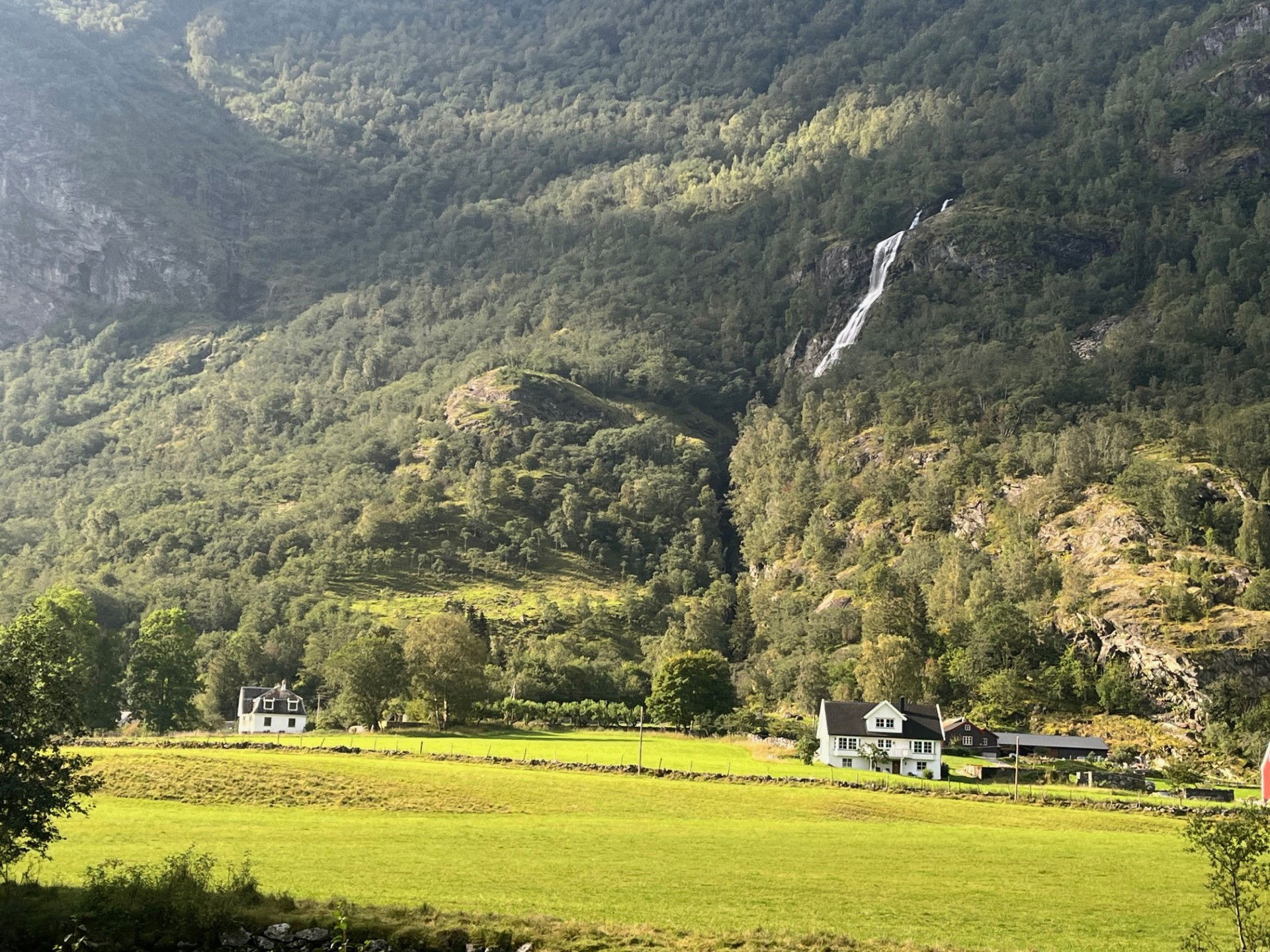
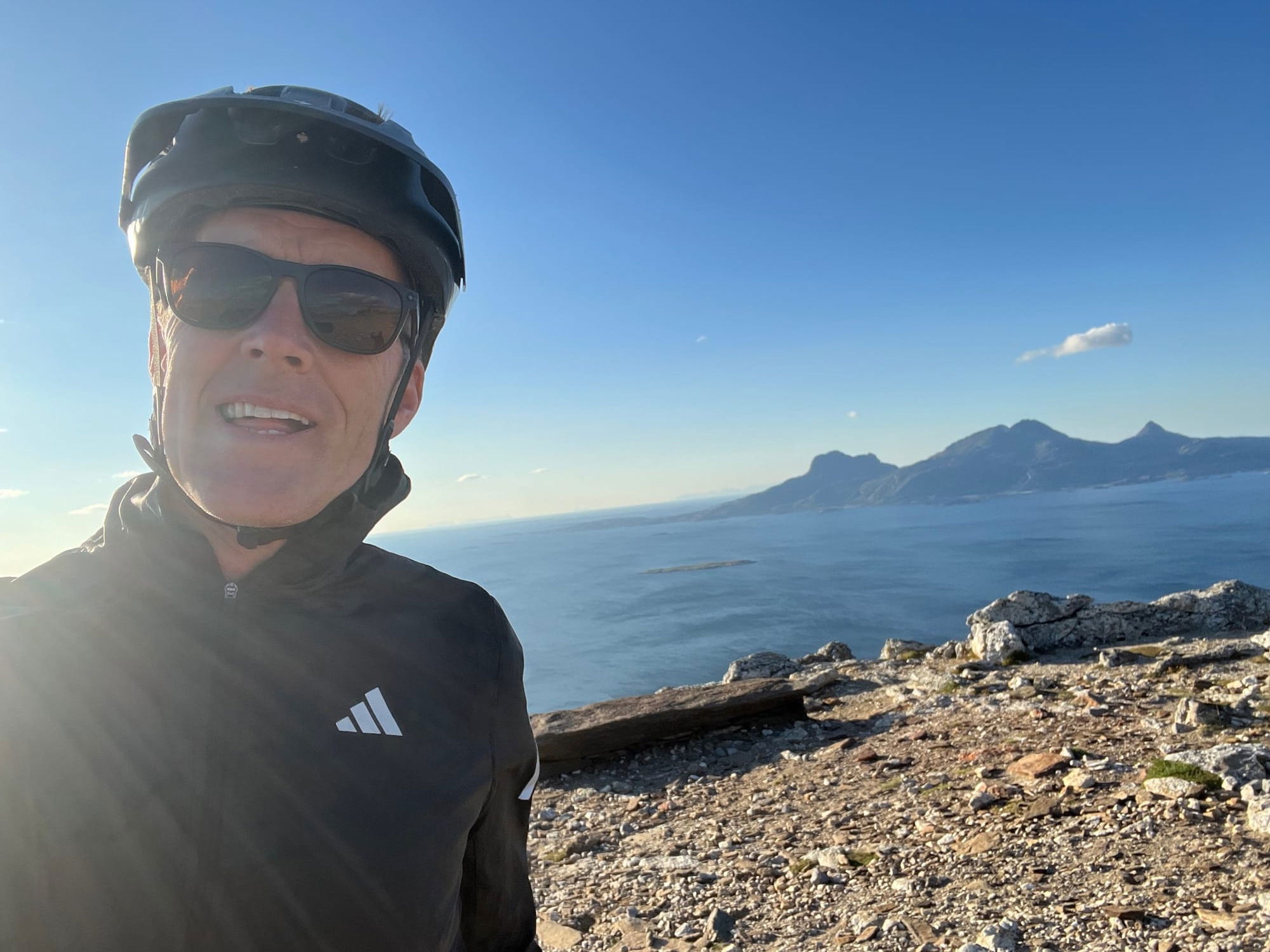
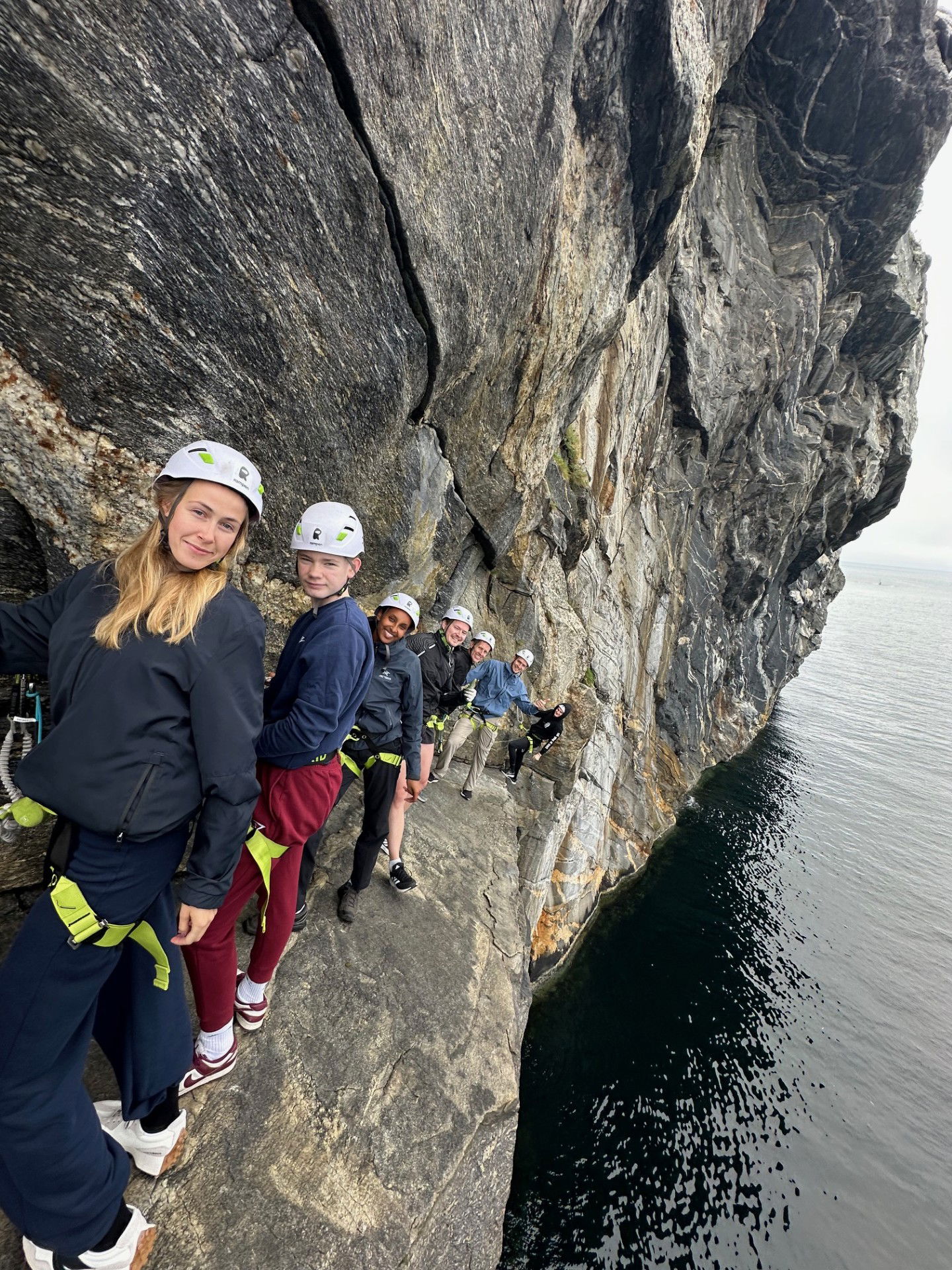
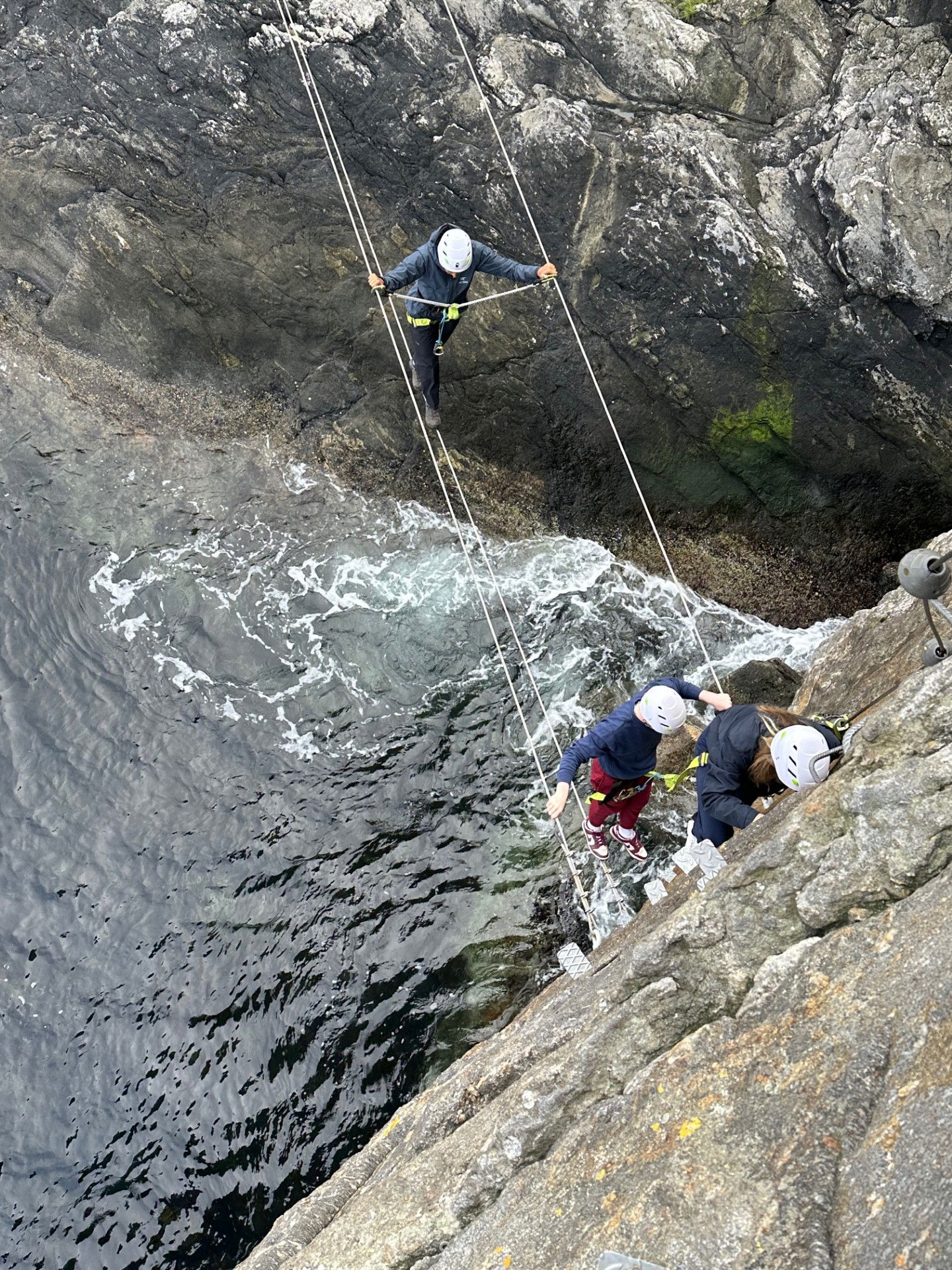
Bottom two photos are from a via ferrata near Bodo, that I joined and where I met two fellow conservation researchers!
September 2024